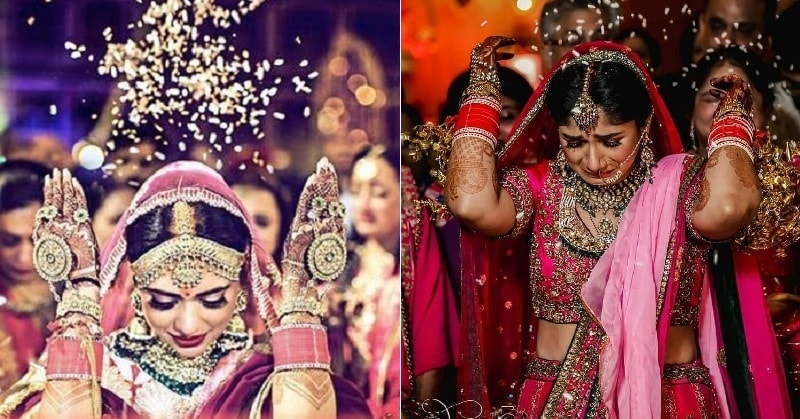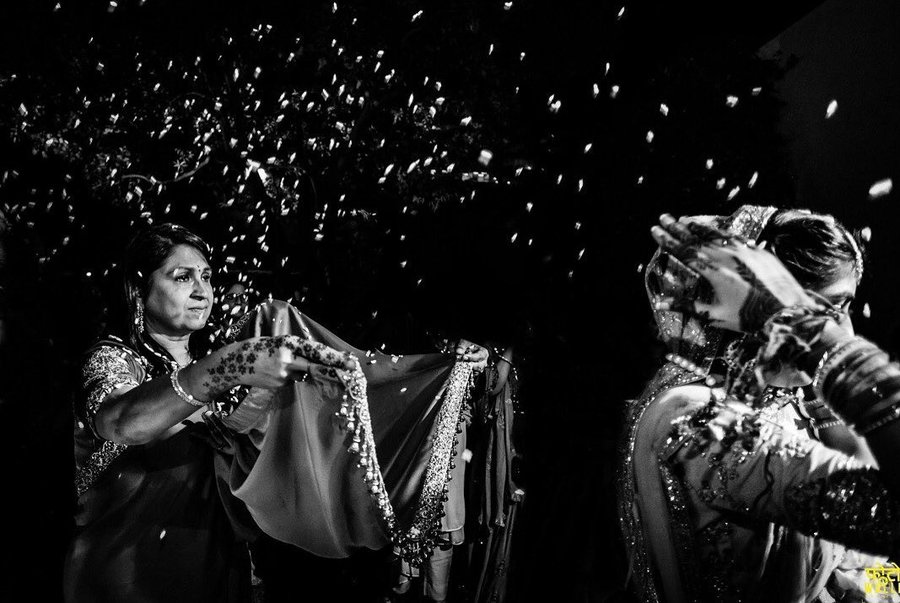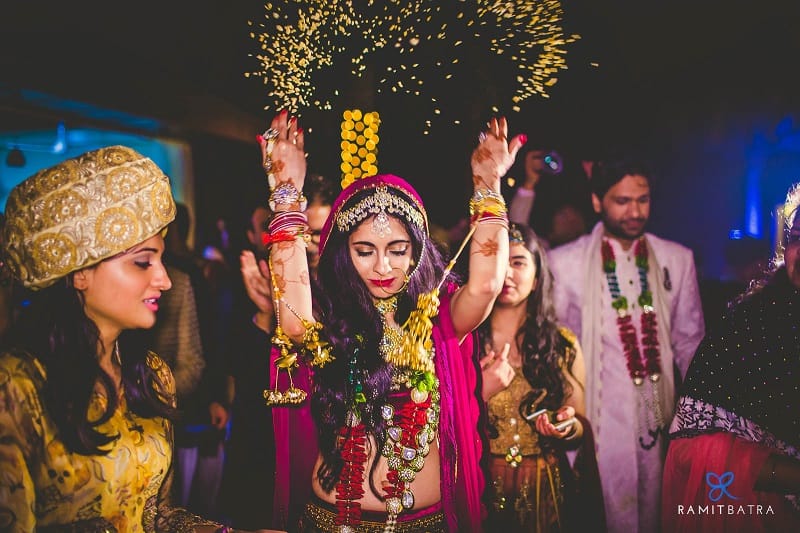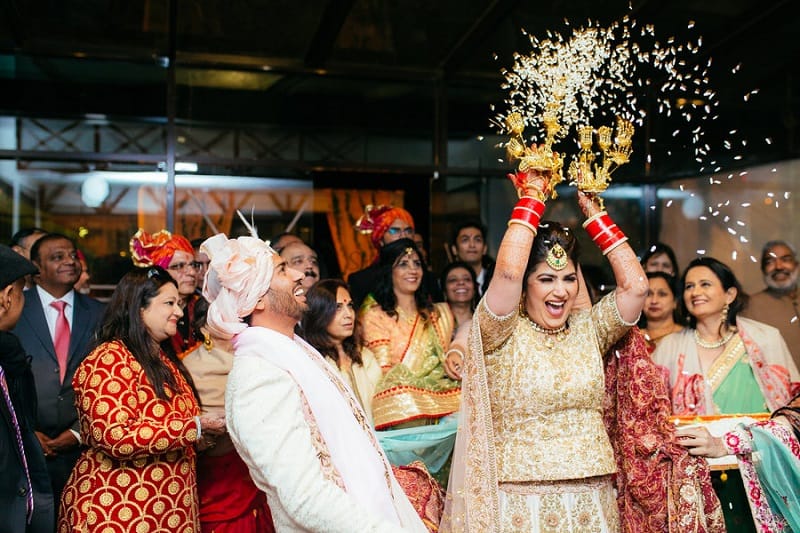
Weddings, especially Hindu ones, are full of ceremonies and rituals. The ceremonies begin more than a week prior to the wedding date and continue a couple of days later as well. Among these rituals, there’s one that leaves everyone teary-eyed and emotional; Vidaai.
Vidaai is a wedding ceremony in which a bride is finally set to bid her goodbye to her parents and start her journey to husband’s place.
During the Vidaai ceremony, Hindu brides perform a ritual in which they throw handful of rice over their shoulder, thrice. The bride’s mother, who is standing just behind her, catches the rice in her Dupatta. It may seem like wastage of precious grains, but this ceremony has a lot of emotional value and meaning for the bride’s family.
ADVERTISEMENT

Significance of Vidaai ceremony
Vidaai translates to Goodbye or Parting in English. This is what this Hindu wedding ceremony is all about. While stepping out of the threshold of her house, the bride bids a teary goodbye to her parents and her house. She embarks on her journey to her husband’s house without looking back.
In Hindu religion, daughters are considered to be the manifestation of Goddess Lakshmi, who is the deity worshipped for wealth and prosperity. When a daughter is stepping out of her parents’ house, she throws back rice to bless them and reassure them that despite her departure, their house will be brimming with wealth and prosperity.

There’s another symbolic significance of bride throwing rice over her shoulders. It also signifies that she is thankful for whatever her parents have done for her ever since her childhood. From that moment onwards, she will be living her life on her own but will continue praying for her parents’ well-being and prosperity.
ADVERTISEMENT
Why only rice is used?
Well, you might have thought that why rice only. The bride could have thrown wheat grains or something else as well. Rice is one grain that is staple in multiple cultures be it Hindu, Islam, Sikh, etc. Even in the West, a newlywed couple is showered with rice to bless them with prosperity and fertility. Rice also has basic life-sustaining qualities and is considered to be a symbol of prosperity and fertility. Have you ever noticed that we filled a metal pot (Kalash) with rice and keep a coconut above it during our Hindu Puja rituals?
When the bride arrives at her husband’s place, she is made to kick a pot filled with rice. She then steps into a plate full of vermillion and walks into the house, leaving the vermillion prints behind.

No matter how overtly-emotional or archaic these rituals might seem, they have a lot of emotional importance attached to it. Even if we distance ourselves from our traditions, we cannot stop our tears when a bride is performing these rituals during her Vidaai ceremony.
ADVERTISEMENT












